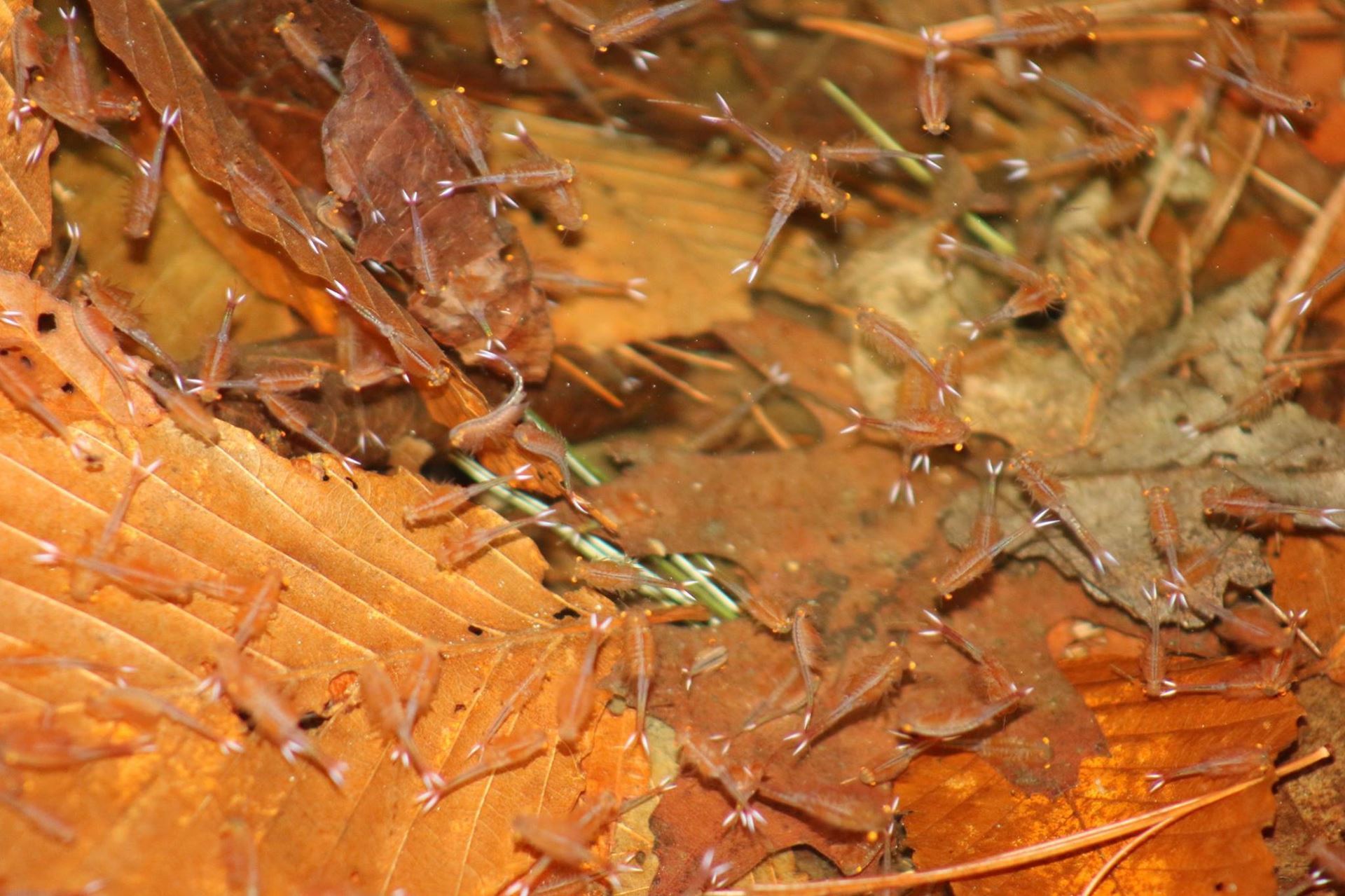- HOME
- Wildlife We Love
- Calling All Critters
- Fairy Shrimp

Fairy Shrimp
*Please note that clicking a link below will take you to a different website. To return to this page, simply close the new tab or window that opens. Anostraca is one of the four orders of crustaceans in the class Branchiopoda; its members are also known as fairy shrimp. They are usually 6–25 mm (0.24–0.98 in) long (exceptionally up to 170 mm or 6.7 in). Most species have 20 body segments, bearing 11 pairs of leaf-like phyllopodia (swimming legs), and the body lacks a carapace. They live in vernal pools and hypersaline lakes across the world, including pools in deserts, in ice-covered mountain lakes and in Antarctica. They swim “upside-down” and feed by filtering organic particles from the water or by scraping algae from surfaces. They are an important food for many birds and fish, and are cultured and harvested for use as fish food. There are 300 species spread across 8 families. DescriptionThe body of a fairy shrimp is elongated and divided into segments.[3] The whole animal is typically 6–25 millimetres (0.24–0.98 in) long, but one species, Branchinecta gigas does not reach sexual maturity until it reaches 50 mm (2.0 in) long, and can grow to 170 mm (6.7 in) long.[3] The exoskeleton is thin and flexible,[3] and lacks any sign of a carapace.[4] The body can be divided into three distinct parts (tagmata) – head, thorax and abdomen.[4] Ecology and BehaviorAnostracans inhabit inland waters ranging from hypersaline lakes to lakes that are almost devoid of dissolved substances;[3] they are “the most archetypal crustaceans” in ephemeral waters.[8] The relatively large size of fairy shrimp, together with their slow means of locomotion, makes them an easy target for predatory fish and waterfowl.[8] This has led to their distribution being restricted to environments with fewer predators, such as vernal pools, salt lakes and lakes at high altitudes or latitudes.[8] The southernmost recorded fairy shrimp is Branchinecta gaini from the Antarctic Peninsula,[9] while the altitude record is held by B. brushi, which lives at 5,930 metres (19,460 ft) in the Chilean Andes.[10] Other genera, such as Streptocephalus, occur in deserts throughout the world.[11] Anostracans swim gracefully by movements of their phyllopodia (thoracic appendages) in a metachronal rhythm.[5] When swimming, the animal’s ventral side is normally uppermost (often described as swimming “upside-down”).[3] They filter food indiscriminately from the water as they swim, but also scrape algae and other organic materials from solid surfaces, for which they turn to have their ventral side against the food surface.[3] Anostracans are an important food source for many birds and fish. For example, they provide much of the food for female pintails and mallards in the Prairie Pothole Region of the Great Plains in North America, especially in years when temporary wetlands are abundant.[12] Similarly, Artemia forms an important part of the diet of flamingos wherever it can be found.[13]
|
Cape Ann Vernal Pool Team * P.O. Box 39 * Gloucester, MA 01931
